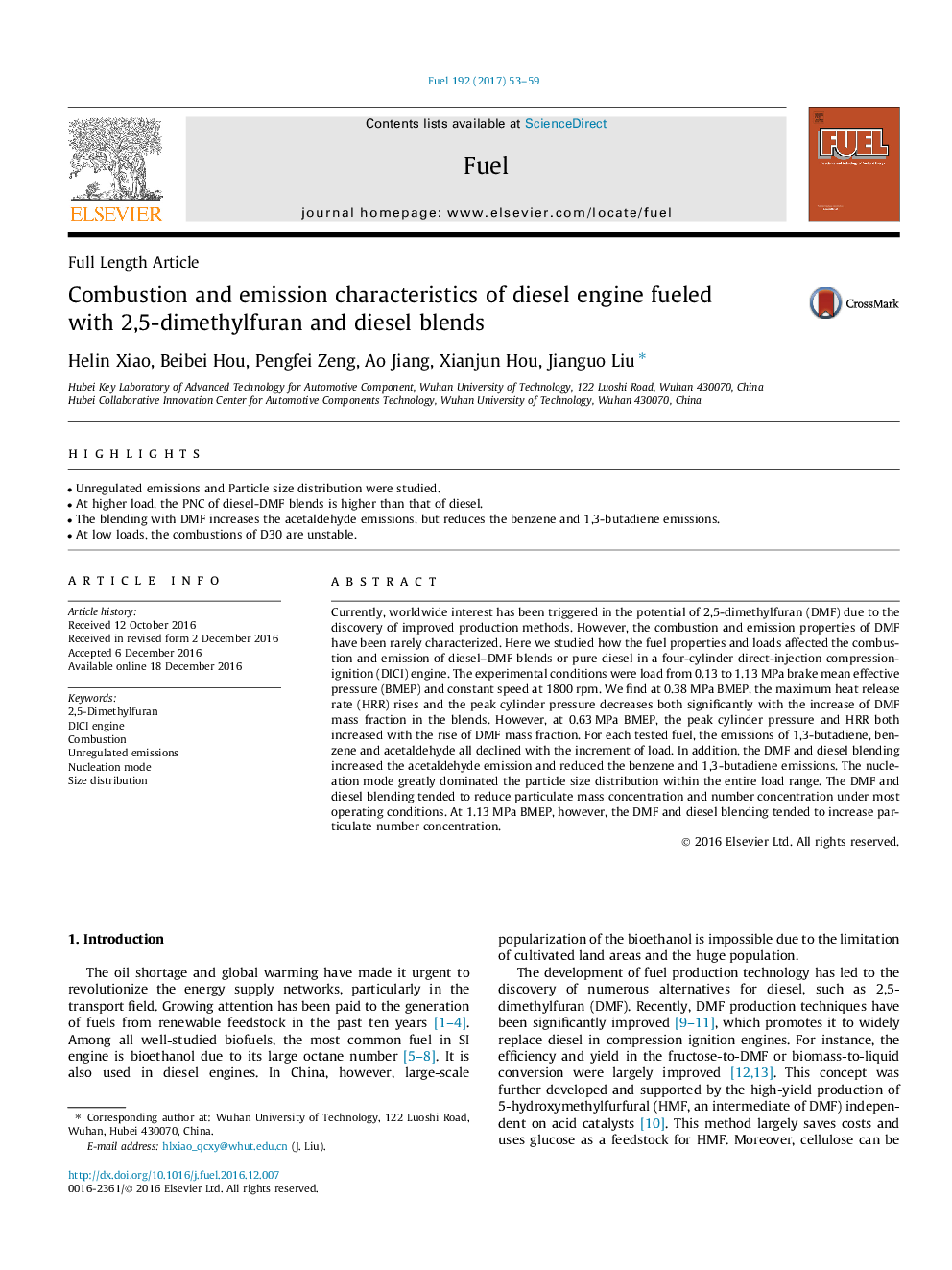| Article ID | Journal | Published Year | Pages | File Type |
|---|---|---|---|---|
| 4768724 | Fuel | 2017 | 7 Pages |
Abstract
Currently, worldwide interest has been triggered in the potential of 2,5-dimethylfuran (DMF) due to the discovery of improved production methods. However, the combustion and emission properties of DMF have been rarely characterized. Here we studied how the fuel properties and loads affected the combustion and emission of diesel-DMF blends or pure diesel in a four-cylinder direct-injection compression-ignition (DICI) engine. The experimental conditions were load from 0.13 to 1.13Â MPa brake mean effective pressure (BMEP) and constant speed at 1800Â rpm. We find at 0.38Â MPa BMEP, the maximum heat release rate (HRR) rises and the peak cylinder pressure decreases both significantly with the increase of DMF mass fraction in the blends. However, at 0.63Â MPa BMEP, the peak cylinder pressure and HRR both increased with the rise of DMF mass fraction. For each tested fuel, the emissions of 1,3-butadiene, benzene and acetaldehyde all declined with the increment of load. In addition, the DMF and diesel blending increased the acetaldehyde emission and reduced the benzene and 1,3-butadiene emissions. The nucleation mode greatly dominated the particle size distribution within the entire load range. The DMF and diesel blending tended to reduce particulate mass concentration and number concentration under most operating conditions. At 1.13Â MPa BMEP, however, the DMF and diesel blending tended to increase particulate number concentration.
Related Topics
Physical Sciences and Engineering
Chemical Engineering
Chemical Engineering (General)
Authors
Helin Xiao, Beibei Hou, Pengfei Zeng, Ao Jiang, Xianjun Hou, Jianguo Liu,
